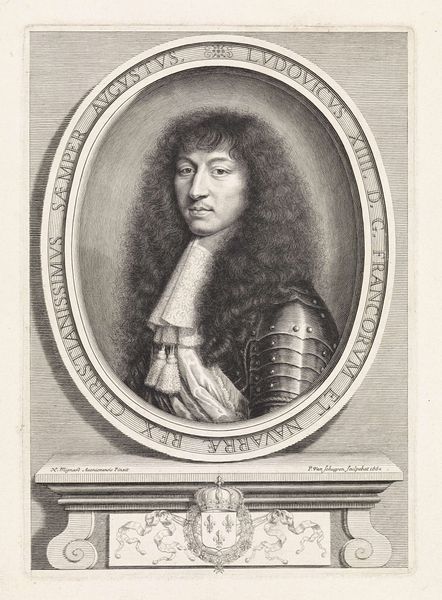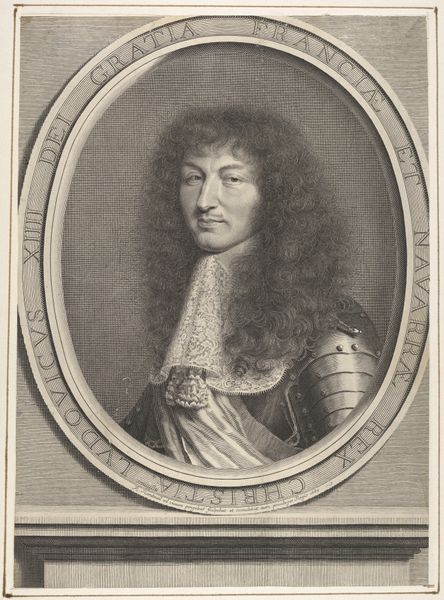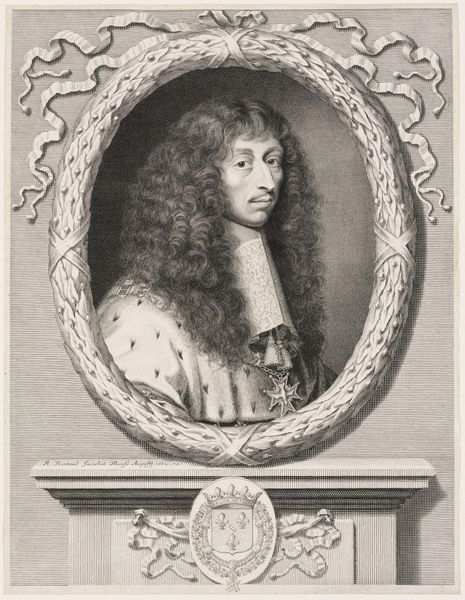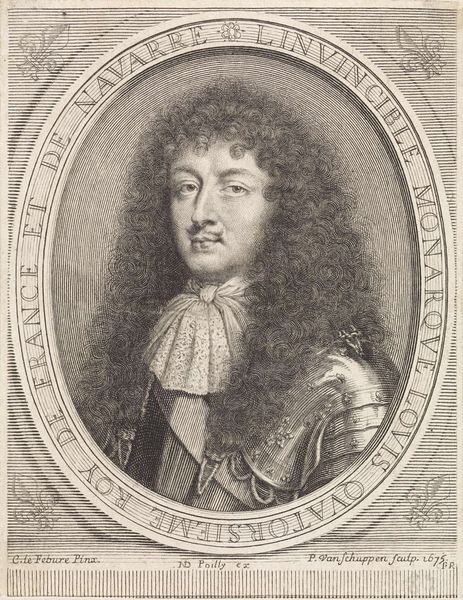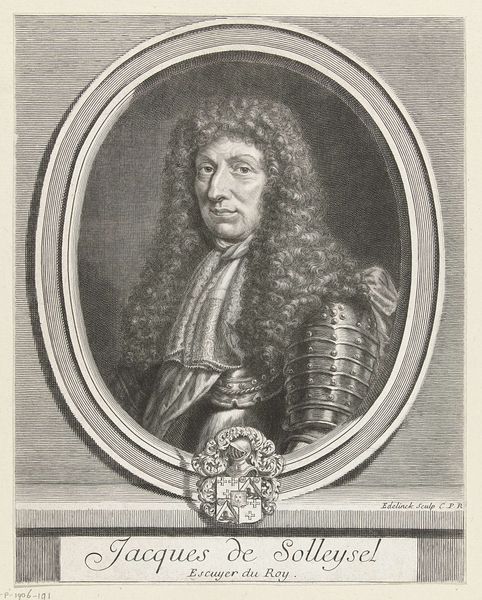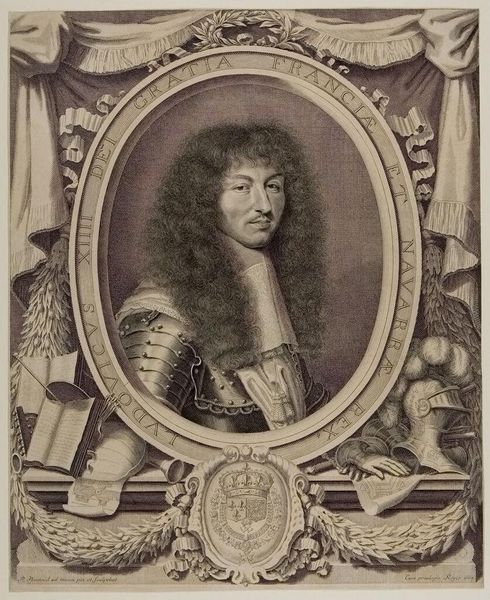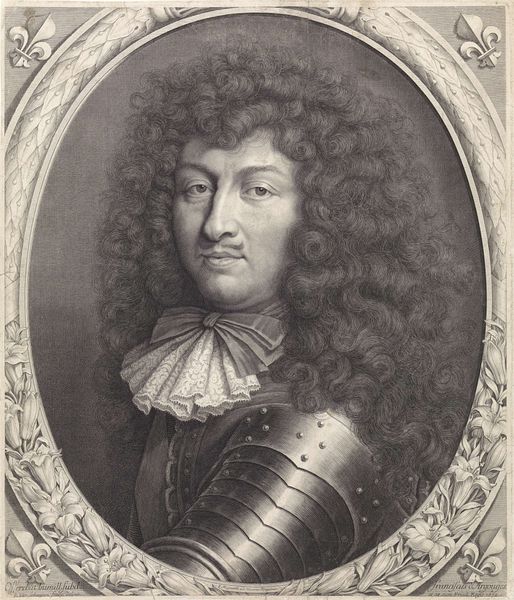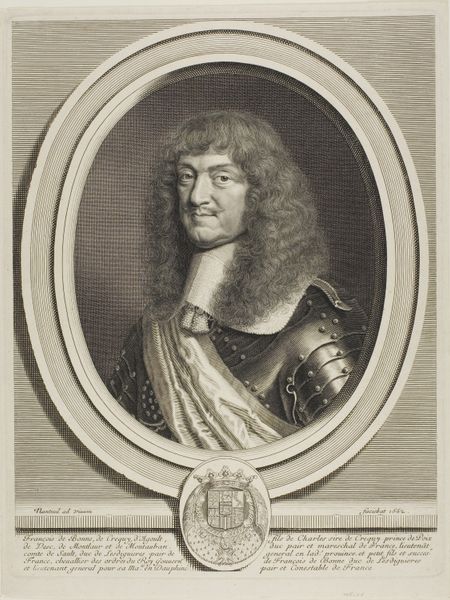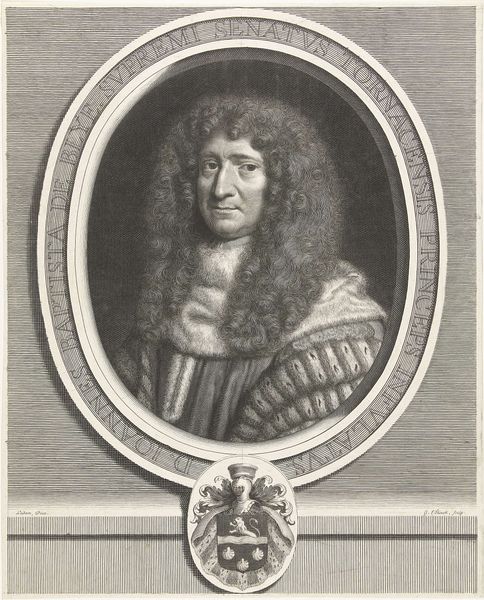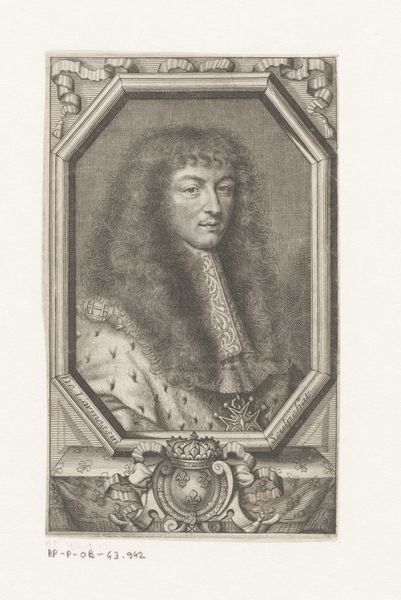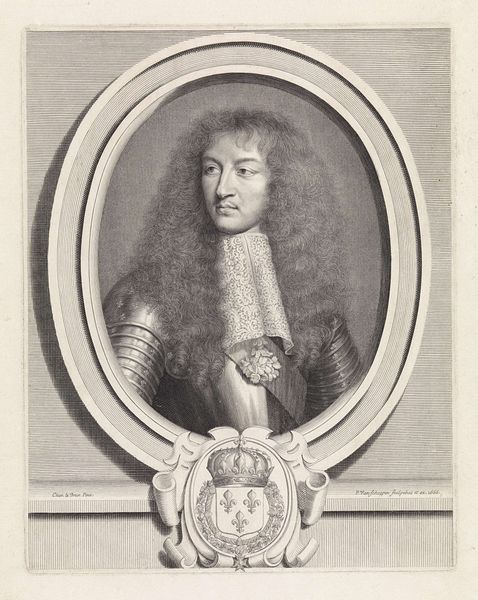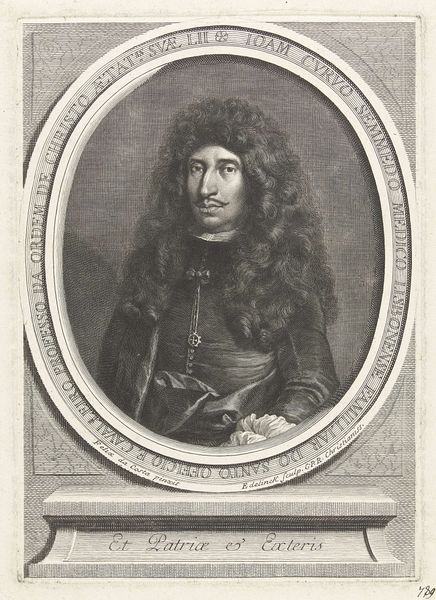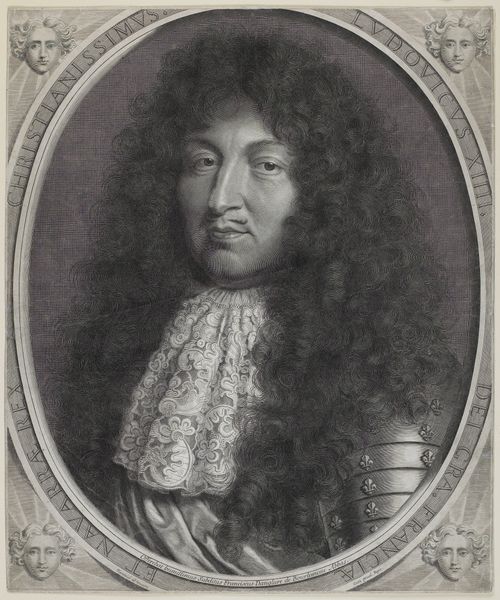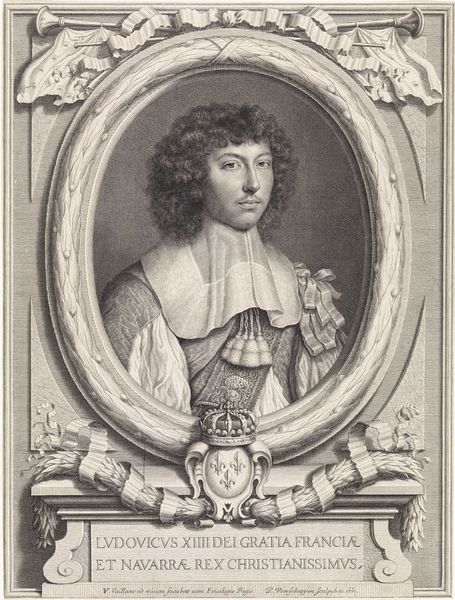
Portret van Lodewijk XIV, koning van Frankrijk, met kanten kraag voorzien van twee kwasten 1661
0:00
0:00
engraving
#
portrait
#
baroque
#
history-painting
#
engraving
Dimensions: height 346 mm, width 270 mm
Copyright: Rijks Museum: Open Domain
Editor: Here we have Pieter van Schuppen's 1661 engraving, "Portrait of Louis XIV, King of France." It really gives a sense of royal formality, doesn’t it? What do you see in this piece, in terms of visual and cultural language? Curator: Instantly, the symbols grab my attention. The fleur-de-lis beneath Louis, for example— it's not just a pretty pattern. It evokes centuries of French monarchy, of divine right. See how it anchors him, visually and ideologically? The lace collar, too – its ostentatious display is not mere fashion, but also an indication of wealth, power, and prestige. Editor: So, even the fashion serves a symbolic purpose? Curator: Precisely! Think of armor. It reminds people of military might but presented within the decorative oval frame, this armour also communicates the idea of noble dignity and perhaps divine will? These things create a kind of... visual memory for his audience. But does the armour speak to you about the political position of Louis XIV at that time? Editor: That's true, it was still a bit turbulent. And, combined with the royal regalia, that political position might be precisely what van Schuppen was getting at. I hadn’t really considered the armor as part of the visual language, but that's fascinating. Curator: The power of symbols, of course, changes over time, sometimes growing fainter, sometimes changing their colors and shapes to reveal something altogether new about the times in which the portrait and the man were both living. Visual culture truly shapes who we are. Editor: It makes you consider how symbols shape collective memory and project political messaging! Thanks, I learned so much!
Comments
No comments
Be the first to comment and join the conversation on the ultimate creative platform.
